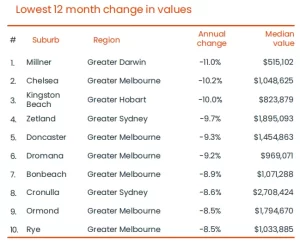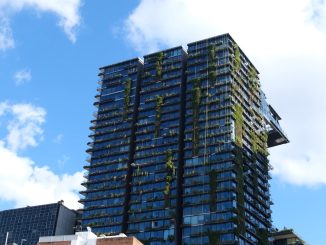The Housing Crisis Facing Young Australians
Australia is facing a severe housing crisis, particularly affecting young people and university students. According to PropTrack data, the national median rent increased by 11.5% in 2024, with Sydney rising by 13.2%, far outpacing income growth. For local and international students aged 18 to 35, high rent, low income, and tight rental resources are severely impacting their studies, lives, and mental health

Image 1
The Beginning of the Crisis: Fighting for “A Room”
Federico Canas Velasco, a 22-year-old fourth-year International Relations student at the University of Sydney, had planned to live independently in 2025. However, rent has far exceeded his part-time income. He reluctantly lives with his family, still facing significant financial pressure. In an interview with The Guardian Australia, he expressed his disappointment with the government’s housing policies, reflecting growing disillusionment and distrust among young people toward the current situation.
The Widespread Impact of the Crisis
Federico is not alone. Between 2018 and 2024, the median rent for student accommodation studios in Sydney and Melbourne grew by an average of 6% annually, showing a continuous rise in student housing rent. Despite international students making up only 4% of the rental market, they are often forced into overcrowded, privacy-lacking conditions. The housing crisis is quietly destroying the future of young people, with students paying the price for basic accommodation, mental health, and their futures.
The Dual Impact of Rent on Mental Health and Academic Performance
The 2024 Australian Youth Barometer survey by Monash University found that 98% of young people aged 18-24 reported feeling anxious or pessimistic, with housing affordability being one of the major concerns. Many expressed feelings of anxiety and uncertainty.

Image 2
The Limitations of Current Policies
Although the Australian government launched the National Housing Accord in 2024, pledging to add 1.2 million homes over five years, most of the resources are directed toward “first-time homebuyers” and “low-income families,” with little specific support for university students. A 2024 report by CBRE on student accommodation in Australia predicts that between 2024 and 2027, the number of PBSA (purpose-built student accommodation) beds will increase by 19,000, or 18%, still insufficient to meet demand. For students currently in crisis, this is hardly enough.
Collaborative Efforts: Exploring Innovative and Systemic Housing Solutions
• Expanding dormitory supply: Introduce social capital through the PPP model. Currently, around 79,000 student beds have been built in Australia, with an additional 8,000 expected by 2026.
• Establishing emergency grants: For example, Victoria University offers rental assistance of up to 500 AUD for students who lost their jobs during the pandemic.
• Policy support: Research shows that utilizing government-owned land could add approximately 30,000 affordable housing units, helping to alleviate the supply-demand imbalance.
These measures can help ease students’ rental anxiety and contribute to building a more resilient housing ecosystem.
Conclusion: The Role and Responsibility of the Media
By combining real case studies with policy recommendations, the media not only records the struggles of students but also guides societal attention to housing justice and educational equity. Federico’s experience is representative and timely, serving as a typical example of the student rental crisis. Such reports not only reveal market inequities but also address the anxieties of young urban Australians, especially international students. Through this, the media does not just narrate a tragedy but promotes public discourse on structural issues, calling for the creation of a fairer, more sustainable student housing ecosystem.




Housing crisis is indeed a very serious and ongoing issue at the moment. You used proptrack’s accurate data sources to prove the existence of the issue. Photo choices that evoke empathy in the reader serve as great eye-catchers. The use of subheadings and boldface type makes for neat and clear typography. Examples of traditional news and academic resources used to add that shows your good research. The addition of details and exploring solutions enriches the whole commentary.But these are long term impacts with long term oriented solutions, I’m curious if you have any thoughts on the short term impacts of the housing crisis? Perhaps there will be a Twitter hashtage to discuss related issues. For words of advice, further cite more academic literature to add perspective. It is a commentary that can make people think deeply. Well done!